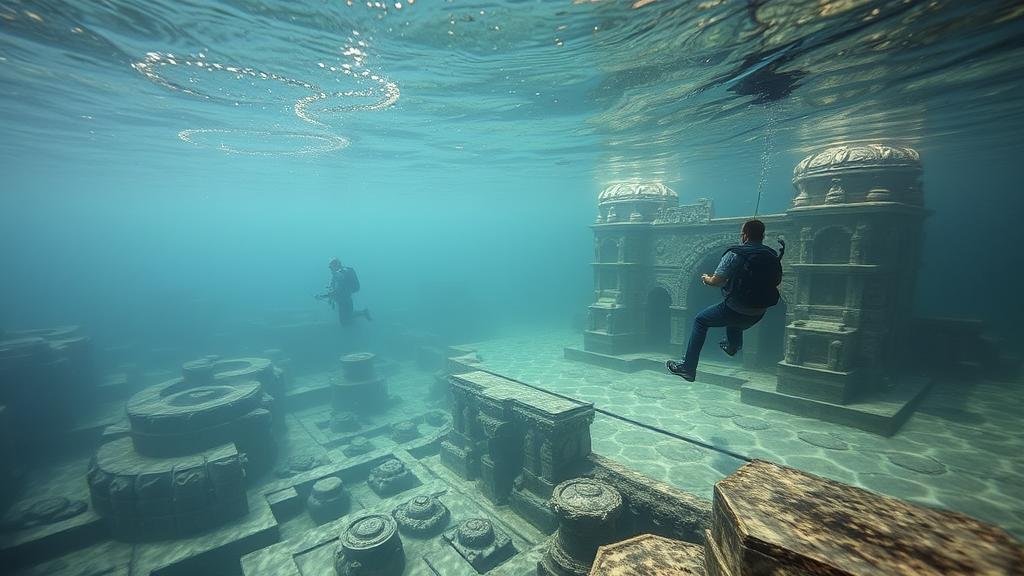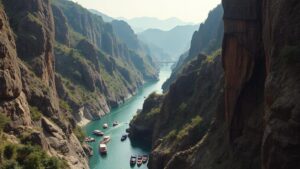How underwater exploration techniques are revealing submerged ancient worlds.
How Underwater Exploration Techniques are Revealing Submerged Ancient Worlds
Underwater exploration is increasingly unveiling the mysteries of ancient civilizations that once thrived on land but have since succumbed to rising sea levels and geological changes. By employing innovative techniques and technologies, archaeologists and oceanographers are uncovering submerged sites that provide valuable insights into human history. These findings tackle questions about the past and illustrate the dynamics between cultures and their ever-changing environments.
The Rise of Underwater Archaeology
Underwater archaeology emerged as a distinct field following the discovery of the sunken treasures of the Titanic in 1985. Its evolution has since been propelled by advancements in technology, facilitating the investigation of submerged landscapes. This niche field utilizes an array of methods, including remote sensing, autonomous underwater vehicles (AUVs), and submersibles–each playing a vital role in exploring ancient worlds beneath the waves.
Advanced Techniques in Underwater Exploration
Several innovative methods are currently being employed to explore underwater sites:
- Remote Sensing: This technology includes sonar mapping and satellite imaging. For example, multibeam sonar can create high-resolution maps of the seafloor, unveiling potential archaeological sites without direct diving.
- ROVs and AUVs: Remotely operated vehicles (ROVs) and autonomous underwater vehicles (AUVs) allow for deep-sea exploration. are equipped with cameras and sampling tools to gather data from sites that are otherwise inaccessible.
- Underwater Drones: These devices are increasingly used for surveying, allowing archaeologists to conduct investigations in areas that are difficult or dangerous for divers to reach.
Key Discoveries of Submerged Ancient Civilizations
Numerous findings illustrate how underwater exploration is revealing submerged ancient worlds. Here are some notable examples:
The Lost City of Dwarka, India
Located off the western coast of India, the submerged city of Dwarka, believed to have been founded by Lord Krishna, was first discovered in the 1980s. Maritime archaeologists utilized sonar technology to reveal a network of structures lying as deep as 40 feet underwater. Excavations have unveiled artifacts such as pottery, jewelry, and ancient bricks, dating back to 1500 B.C., that challenge previous understandings of urban development in ancient India.
The Antikythera Shipwreck, Greece
The Antikythera shipwreck, discovered in 1900, has been the site of continuous exploration. Notable among the finds is the Antikythera mechanism, considered the worlds first analog computer, dating back to around 150-100 B.C. Advances in imaging technology, such as 3D scanning, have enabled researchers to study the wreck and its contents more closely, revealing insights into ancient Greek maritime technology and trade routes.
Atlantis: The Search Continues
The mythical city of Atlantis has long captivated imaginations, but underwater exploration has brought researchers ever closer to uncovering possible real-life counterparts. Some theorize that the area around the Azores may hold remnants of an ancient civilization lost to the ocean. Using sonar technology to map the seabed, archaeologists are searching for evidentiary correlations between geological formations and historical accounts of submerged lands.
The Impact of Climate Change on Underwater Archaeology
Climate change poses a dual threat: while it accelerates the submergence of coastal archaeological sites, it also drives the urgency for underwater exploration. Rising sea levels and increased storm intensity threaten to erode and wash away invaluable historical data. To combat this, researchers are racing against time, employing advanced technologies to document and excavate submerged sites before they are lost forever.
Challenges and Future Directions
Despite the potential of underwater archaeology, challenges remain. Limitations include technological constraints, significant funding requirements, and the need for specialized training in underwater techniques. Future directions in underwater exploration may involve:
- Enhanced use of artificial intelligence for data analysis and pattern recognition in sonar surveys.
- Improved environmental monitoring to understand the impact of climate change on submerged sites.
- Development of international partnerships to share data and resources for large-scale explorations.
Conclusion: The Quest for Knowledge
Underwater exploration techniques are paving the way for remarkable discoveries of ancient submerged worlds. As technology advances, archaeologists continue to unlock the secrets of our past, enriching our understanding of human civilizations relationship with water. These explorations not only provide insights into ancient cultures but also raise awareness about the importance of preserving these underwater treasures amid threats posed by climate change. Moving forward, continued investment in technology and collaboration among global archaeologists will be crucial in safeguarding our submerged heritage for future generations.



